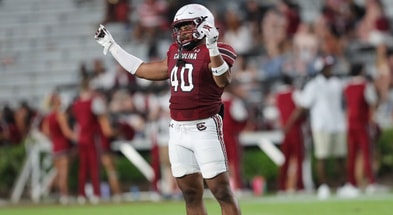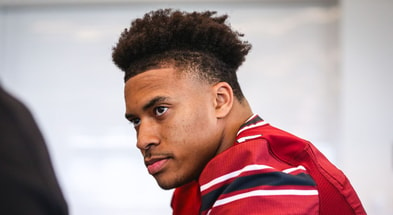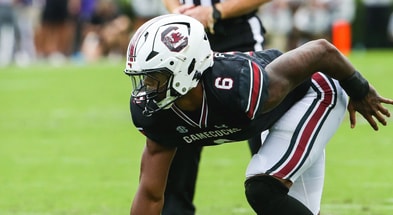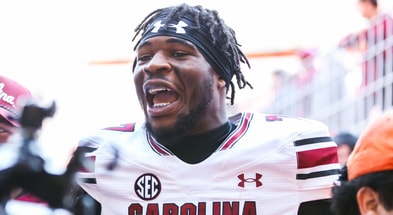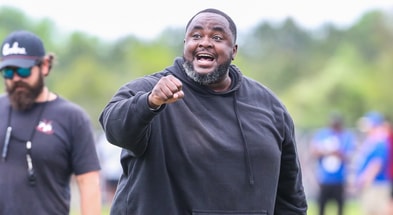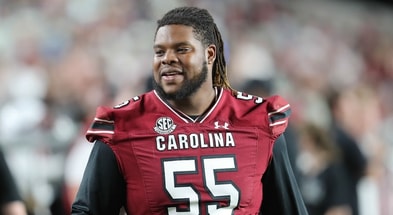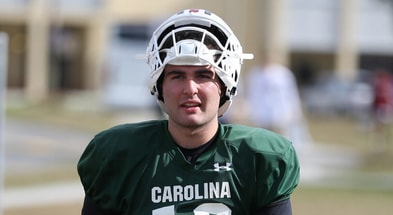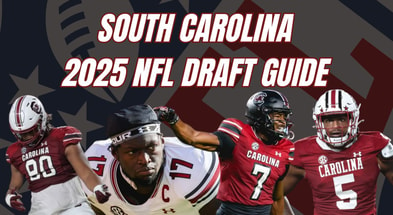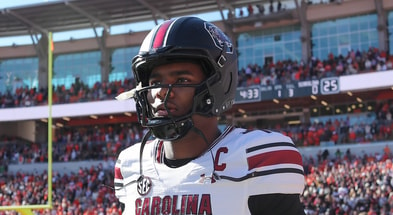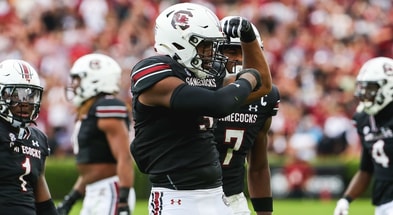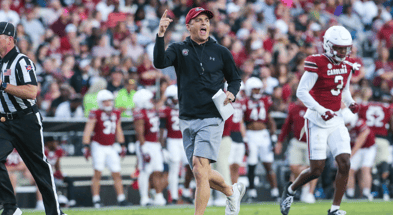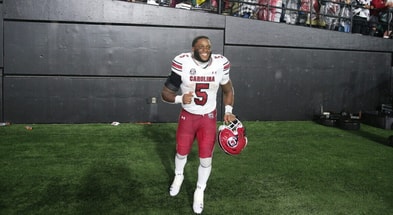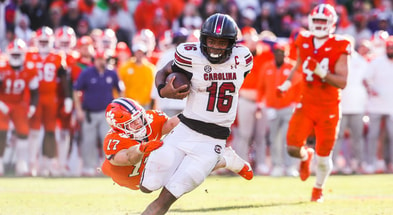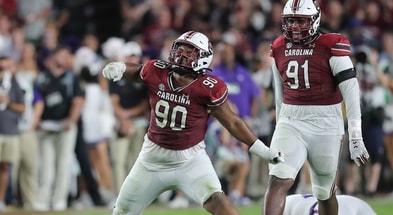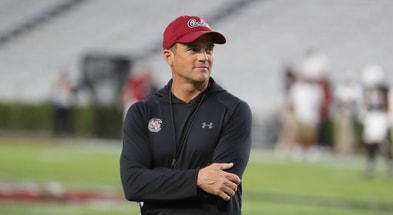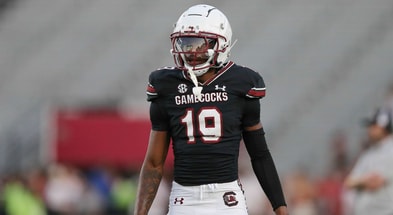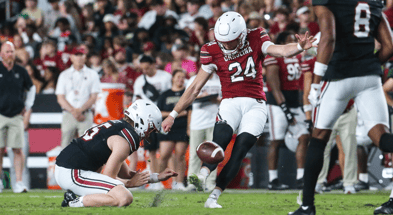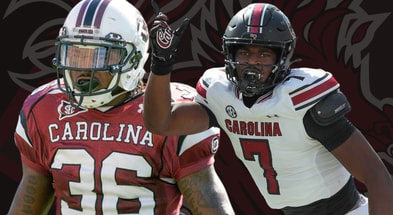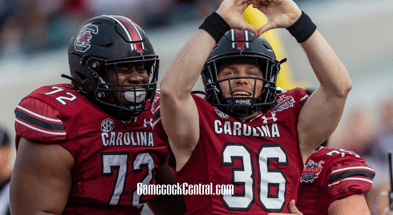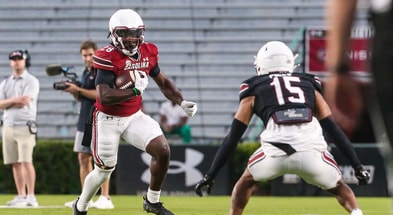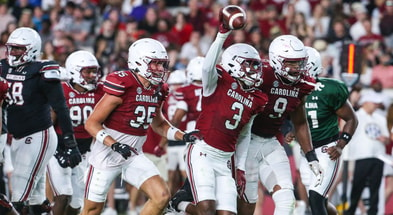The significance of stars on the 1980 throwback uniforms

Alan Piercy is the author of A Gamecock Odyssey: University of South Carolina Sports in the Independent Era (1971-1991). The following was originally published on Alan’s South By Southeast newsletter.
For those of us old enough to remember, there was nothing quite like those Jim Carlen-era football uniforms. The early ’80s-era mesh jerseys, the garnet & black piping along the britches, the helmet with its distinctive striping, garnet face mask, and large Block “C” and Gamecock logo, etc. Many in the uniform-obsessed Gamecock fanbase believe they still rank as the greatest uniforms in the long history of South Carolina football.
The Gamecocks are throwing it back to 1980 this Saturday as they take on the Zips of Akron under the lights at Williams-Brice Stadium (although ticket and concession prices will not likely induce similar feelings of nostalgia).
Reflections of Texas Tech
When Carlen arrived in Columbia to replace the outgoing Paul Dietzel in 1975, he brought a signature uniform design along with him. Carlen replaced Tech’s scarlet “TT” with Carolina’s Block “C,” but otherwise rolled out the same lids he used in Lubbock.
But about those stars…
One prominent feature of the Carlen-era helmets was the signature garnet stars. Some players had them, some didn’t. Of the ones who had them, some had more than others.
Urban legends have sprung up on fan message boards across the years regarding the origin story of the stars. Some claim they were vaguely tied to on-field performance. One fan posited on a recent Reddit thread that the stars were a nod to the Bicentennial celebrations of 1976. Another poster suggested a possible tribute to the bronze stars adorning the granite west facade of the State House in Columbia, famously marking impact points from Union shelling in February 1865. Others have suggested Carlen “…just liked stars.”
On-field performance is the correct answer, but Carlen and his staff deployed well-defined metrics to determine which players had earned those coveted stickers.
Carlen spoke with Ken Burger of the Columbia Record for an Oct. 1, 1975 article about the awards. South Carolina’s first-year head coach discussed the recently established “Gamecock Club” – not to be confused with USC’s booster club of the same name.
“It’s a small thing, but it means a lot to the players, Carlen told Burger. This is really a special kind of award for the kids who never get recognized in the newspapers, and it’s something they earn.”
The coach had similarly developed Mountaineer and Red Raider Clubs during his previous head coaching stops at West Virginia and Texas Tech, respectively.
Top 10
- 1Breaking
MiLaysia Fulwiley
South Carolina transfer to LSU
- 2Hot
2nd Round NFL Mock Draft
QBs under microscope
- 3
Shedeur Sanders reacts
To going undrafted in 1st round
- 4
Marcus Spears fires back
At Stephen A. Smith over Shedeur take
- 5
Picks by conference
SEC, Big Ten dominate NFL Draft
Get the On3 Top 10 to your inbox every morning
By clicking "Subscribe to Newsletter", I agree to On3's Privacy Notice, Terms, and use of my personal information described therein.
Carlen and his staff developed a point system designed to give every player on the field – defense, offense, and special teams – an equal opportunity to earn points, with 20 points needed to earn a star.
The system included credits for pancake blocks, tackles on punts and kickoffs, two receptions in a game for a receiver, four broken tackles in a game for running backs, recovered fumbles, and making a tackle after an interception – all worth one point apiece.
Coaches awarded two points for an interception, tackling in the end zone for a safety, blocking a punt, causing or recovering a fumble, a sack or tackle for loss of yardage, and making a tackle inside the 20-yard-line on a kickoff.
Carlen’s system also included demerits, including minus one-point for a five-yard penalty, and two points for the 15-yard variety.
“We hand out the points very carefully,” Carlen explained. “You’ll see some schools like Ohio State whose players have award markers running all over their helmets. But you won’t see it here. A guy will have to have an exceptional season to end up with four or five stars.”
Carlen continued, “Not only does it give the players more incentive, but it makes us watch the films closer. Sometimes the players will challenge us on a play for something we missed. We encourage this.”
In closing his article, Burger noted the tracking and awarding of points and stars might cause a little more paperwork for Carlen and his staff. But the overall rewards might be worth more in the long run than a little garnet and black decal.
Indeed, the stars were a point of pride and a motivating factor for Carlen’s players.
It will be good to see them revived again on Saturday. They will be a fitting tribute to the players, from Jeff Grantz to George Rogers and everyone in between, who earned those coveted stickers on the unforgiving astroturf hardscape of a more spartan Williams-Brice Stadium those many years ago.

